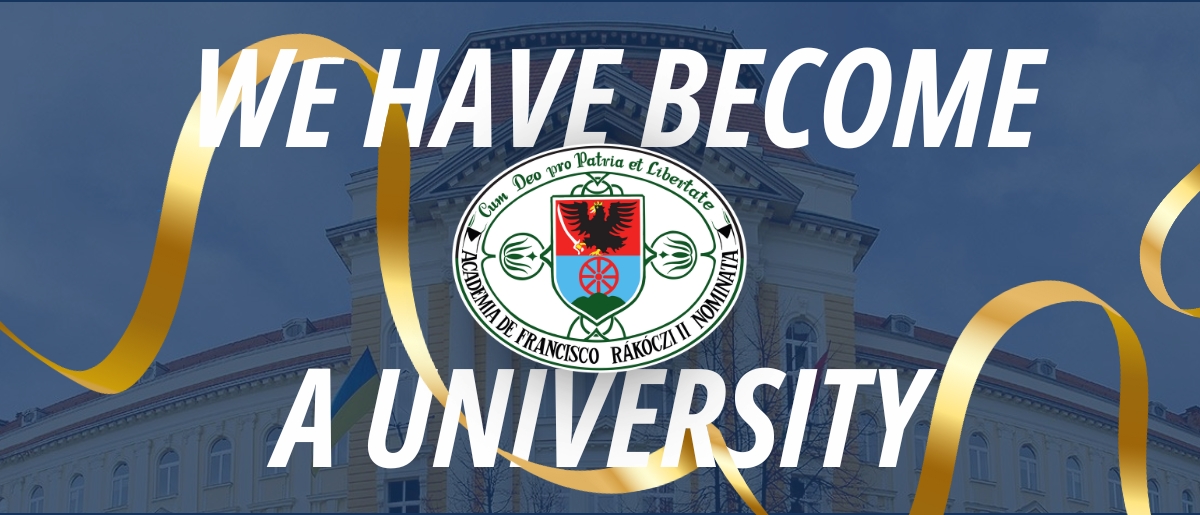Becoming a University: A secure foundation for future generations
A long-cherished dream of the Transcarpathian’s Hungarian community came true in the autumn of 1993, when the decision was made in Beregszász to establish a Hungarian college. At a joint meeting of the Hungarian Cultural Association of Transcarpathia and the Transcarpathian Hungarian Pedagogical Association, it was declared that there was a need for an institution that would provide higher education in the Hungarian language in our homeland.
In January 1994, the Charity Foundation for the Transcarpathian Hungarian College was registered, which undertook the task of organizing and maintaining the higher education institution. On May 17 of that year, a significant milestone was reached in the cause of Hungarian higher education in Transcarpathia: the Ministry of Culture and Education of Hungary, the György Bessenyei Teacher Training College in Nyíregyháza, and the Charity Foundation for the Transcarpathian Hungarian College signed an agreement to launch a special teacher training program. The ministry committed to financing the training, while the György Bessenyei Teacher Training College launched a correspondence course in Beregszász with its teachers, which enabled students to obtain higher education qualifications in their homeland. The foundation provided the necessary conditions, as well as the travel and accommodation for the Hungarian lecturers.
The first entrance exams were held in August 1994, as a result of which 41 students were able to begin their studies in preschool education, teaching, English–History, and English–Geography majors. The ceremonial opening of the academic year took place on September 17, 1994, and classes began in the modest apartment of the Hungarian High School’s caretaker in Beregszász and then continued in several temporary locations until a suitable building could be secured. The Reformed Parish of Beregszász played a key role in finding a home for the institution, although the restitution of properties often encountered political and legal obstacles.
The breakthrough came in 1996: the Ministry of Education of Ukraine officially issued the operating license, and in September the Transcarpathian Hungarian Teacher Training College was formally opened. The event was attended by representatives of both the Hungarian and Ukrainian governments, symbolically affirming the legitimacy of the college.
In the following years, the range of programs continuously expanded: horticultural engineering was launched in 1999, and economics in 2000, in cooperation with higher education institutions in Hungary. The first state-recognized diplomas were awarded to graduates in 2001, which was a milestone not only for the institution but also for the entire Hungarian community in Transcarpathia.
In the early 2000s, significant building renovations began. With the support of the Apáczai Public Foundation and the Illyés Public Foundation, the old courthouse palace was renovated, followed by the former Grand Hotel on the main square, which became the home of the Ferenc Kölcsey Special College. The inaugurations were attended by the highest-ranking leaders of both Hungary and Ukraine, including Hungarian President Ferenc Mádl and Ukrainian Prime Minister Anatoliy Kinakh.
In 2003, the institution took the name of Ferenc Rákóczi II, and continued to operate as the Ferenc Rákóczi II Transcarpathian Hungarian College of Higher Education. The name change was not only a tribute to the memory of the Prince, but also expressed the College’s commitment to preserving and passing on Hungarian values.
However, the years that followed were not without difficulties. Local political circumstances often attempted to undermine the institution’s operations, for example through the withdrawal of properties or by imposing administrative obstacles. Nevertheless, through perseverance, community cooperation and support from Hungary, the College was always able to move forward.
In 2025, the College was officially transformed into a University. This historic step is a milestone not only for the institution but also for the entire Hungarian community in Transcarpathia, as it ensures opportunities for future generations to prosper and develop professionally in their homeland. From its initial four programs, the institution has grown to offer 33 study programs across seven fields of study, and this academic year has begun with nearly 1,600 students. As of October 1, 2025, we are officially and proudly bearing the title of University.
Anita Kurmay
-
This article is also available in
Українська
Magyar

